Use chuck roast to create a flavorful main course for any meal. This muscular cut of meat comes from the shoulder area and requires long, slow cooking for optimal tenderness, making it ideal for a pot roast. But that doesn't mean that your options are limited to indoor uses. Grill a juicy, tender chuck roast that's delicious enough to serve at your next barbecue but simple enough to prepare on any night.
Setting Up the Grill
Grill the chuck roast over indirect heat, which cooks the meat over the unlit portion of the grill. This provides the long, slow cooking time required. Clean and oil the grates, and use one of the following methods, depending on the type of grill you're using:
- For a charcoal grill, preheat the grill for approximately 10 minutes before raking the coals into piles on either side of the center. Place a disposable aluminum pan in the center of the coals, along with approximately 1 inch of water, in the center of the two coal piles. This catches the drippings to prevent flare-ups.
- For a gas grill, preheat the grill for approximately 10 minutes before turning off one burner it you have a two-burner grill. If you have a three-burner grill, turn off the center burner.
Seasoning the Roast
To add flavor to your grilled chuck roast, try one or more of the following options:
- Use your favorite dry seasonings: Rub the exterior with dry spices such as garlic powder, onion powder, salt, black pepper and paprika. According to Aliza Green, author of Field Guide to Meat, chuck roast also pairs well with the flavors of beer, coriander, bay leaves, rosemary, anise, sage, tomatoes, cumin and onions.
- Marinate the roast for a few hours or even overnight in the refrigerator: Infuse the chuck roast with flavor and add tenderness by marinating it with a premixed commercially prepared marinade or with your own concoction. To make your own marinade, combine ingredients such as minced onion, minced or finely chopped garlic, dry sherry or red wine, soy sauce and vegetable or olive oil, along with salt and pepper, in a resealable bag. Add the roast, seal the bag and squish it a little to make sure the chuck roast is coated. Marinate the meat for at least three hours in the refrigerator.
- Add deeper flavor with smoke: Play off the inherent smoked flavor that grilling imparts to give the roast a more complex taste. Place wood chunks in a smoker box or a disposable aluminum pan placed on one of the lid burners of your gas grill or added right on top of the coals of a charcoal grill. Once you see that thewood is smoking, add the meat to the grill.
Grilling the Chuck Roast
While you're firing up the grill, remove the roast from the refrigerator and let it warm slightly.
Once the grill is hot, maintain medium-low heat. To check the grill temperature, use the built-in thermometer, which should read anywhere between 300 and 350 degrees Fahrenheit. If your grill doesn't have a thermometer, try the hand check test: If you can keep your hand 3 inches above the grate for six to seven seconds, you've achieved the right temperature range.
Place the roast over the unlit portion of the grill, close the lid and let the chuck roast cool for approximately 60 to 90 minutes, turning it once. To determine whether the meat is done, insert an instant-read thermometer into the meatiest area. The U.S. Food and Drug Administration recommends cooking beef to an internal temperature of 145 F and allowing it three minutes of resting after taking it off the grill. If you prefer your meat cooked medium, pull it off when the thermometer reads 160 or 170 F for meat that's well done.
Allow the roast to rest for approximately 10 minutes before slicing it against the grain.
Related Articles

Slow Cooking a Tri-Tip Roast With ...
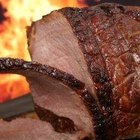
How to BBQ the Eye of Round Roast
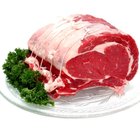
How to Marinate a Top Round Roast

How to Cook a 15-Pound Rib Roast
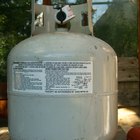
How to Barbeque a Brisket on a Gas Grill
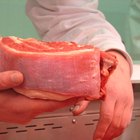
How to Cook Brisket on a Propane Grill

How to Use Wood Chips in a Smoker

How to Make a Blackbuck Antelope Roast
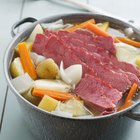
How to Slow Cook a Joint of Beef

Does Cooking at a Low Temperature for a ...
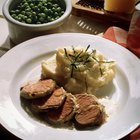
How to Make a Juicy Pork Tenderloin
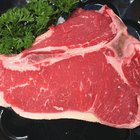
Ways to Cook T-Bones Indoors

How to Make a Roast in an Electric Fry ...
How to Cook a 4-Pound Beef Prime Rib ...
How to Cook Boneless Top Chuck Steak in ...
How to Smoke Venison Neck Roast
How to Cook a Goat Shoulder
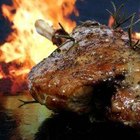
How to Roast Pork on a Weber Grill

How to Cook Boneless Country Spare Ribs

How to Slow Cook an Eye of Round Roast ...
References
Writer Bio
Caryn Anderson combines extensive behind-the-scenes writing experience with her passion for all things food, fashion, garden and travel. Bitten by the travel bug at the age of 15 after a trip to Europe, Anderson fostered her love of style and fashion while living in New York City and earning her degree at New York University.